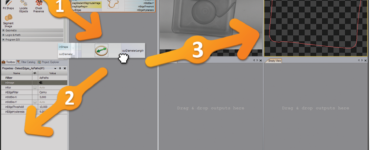In the world of video game development, one encounters a multitude of technical terms and concepts that can sometimes be perplexing. One such term is “r_installsprite: sprite cpos frame a is missing rotations.” While it might sound like a mouthful, this phrase actually refers to a specific issue that can arise during the creation and integration of sprites in a video game. Let’s dive into what this error message means and how developers can address it effectively.
Introduction
In the realm of video game programming, sprites are graphical elements that contribute to the visual richness of games. However, during the development process, encountering errors is not uncommon. One such error, “r_installsprite: sprite cpos frame a is missing rotations,” can hinder the smooth progress of game creation. This article delves into the intricacies of this error message and provides insights into rectifying and preventing it.
What is r_installsprite Error?
The “r_installsprite: sprite cpos frame a is missing rotations” error message indicates that there is an issue with sprite rotations within a video game. In simpler terms, when a game attempts to render a sprite with specific rotations but fails to find the necessary rotation data, this error occurs. It signifies a mismatch between the desired visual orientation of the sprite and the available rotation information.
Understanding Sprite Rotations
Sprite rotations are pivotal for achieving dynamic visual effects in games. They allow objects to appear three-dimensional and change their orientation as they move or interact. Rotations are controlled by numerical values that dictate the angle and direction of the sprite’s portrayal on the screen. A missing rotation implies that the game lacks the information required to properly orient the sprite, resulting in the “r_installsprite” error.
Common Causes of Missing Rotations
Several factors can contribute to the occurrence of missing rotations. One common cause is incomplete or corrupted sprite data. If the rotation-related information for a particular sprite is not properly defined or is somehow damaged, the game engine cannot execute the rotation, triggering the error message. Furthermore, improper integration of sprites or errors during the asset import process can also lead to missing rotation data.
Troubleshooting the Issue
To address the “r_installsprite” error, developers can follow a systematic approach. First, they should verify the integrity of the sprite data. This involves checking the rotation-related information associated with the sprite in question. If any discrepancies are found, rectifying them can often resolve the error. Additionally, ensuring that the game engine’s settings are appropriately configured to handle rotations is crucial.
Preventing Rotation-related Errors
To avoid encountering the “r_installsprite” error, developers should adopt best practices. These include meticulous organization of sprite assets, proper documentation of rotation values, and consistent quality control during the asset creation process. By maintaining a standardized approach to sprite integration and adhering to rotation guidelines, developers can minimize the chances of missing rotation-related errors.
Best Practices for Sprite Integration
When integrating sprites into a game, developers should prioritize adherence to guidelines provided by the game engine’s documentation. Clear communication between artists and developers is essential to ensure that rotation data is accurately conveyed and implemented. Thorough testing at various stages of development can help identify and rectify rotation-related issues before they escalate.
Optimizing Game Performance
Efficient sprite rendering contributes to optimal game performance. Developers should consider the impact of rotations on performance and make necessary adjustments. Employing techniques such as sprite batching and culling can enhance rendering efficiency. Moreover, understanding the hardware limitations of the target platforms can aid in devising rotation strategies that align with performance goals.
The Role of Game Engines
Modern game engines play a pivotal role in handling sprite rotations and rendering. Developers should have a comprehensive understanding of the engine’s capabilities and limitations. Leveraging the engine’s built-in features for rotation can streamline development and reduce the likelihood of encountering rotation-related errors.
Addressing Similar Error Messages
While “r_installsprite: sprite cpos frame a is missing rotations” is a specific error, similar messages related to missing data can also arise. Developers should approach these messages with a similar troubleshooting mindset. Examining the asset pipeline, data structures, and integration processes can lead to effective solutions.
Importance of Comprehensive Testing
Thorough testing is a cornerstone of successful game development. Developers should implement rigorous testing procedures that encompass various scenarios involving sprite rotations. Automated testing tools and manual playtesting can uncover rotation-related issues early in the development cycle, saving time and resources in the long run.
Collaboration between Artists and Developers
The collaboration between artists and developers is crucial to addressing rotation-related errors. Clear communication of rotation values, artistic intent, and technical constraints can bridge the gap between creative vision and technical implementation. Regular feedback loops and open dialogue can lead to a smoother integration process.
Staying Updated with Development Trends
The field of game development is constantly evolving, with new tools, techniques, and best practices emerging regularly. Developers should stay informed about the latest trends in sprite rendering and rotation optimization. Engaging with the game development community and attending industry events can provide valuable insights and keep developers ahead of the curve.
Conclusion
In the intricate landscape of video game development, errors like “r_installsprite: sprite cpos frame a is missing rotations” can be both challenging and enlightening. By understanding the underlying causes, employing effective troubleshooting methods, and fostering collaboration, developers can overcome rotation-related issues and create captivating gaming experiences. Embracing the dynamic nature of game development and staying vigilant during the integration process ensures that sprites rotate seamlessly, enriching the visual tapestry of virtual worlds.









